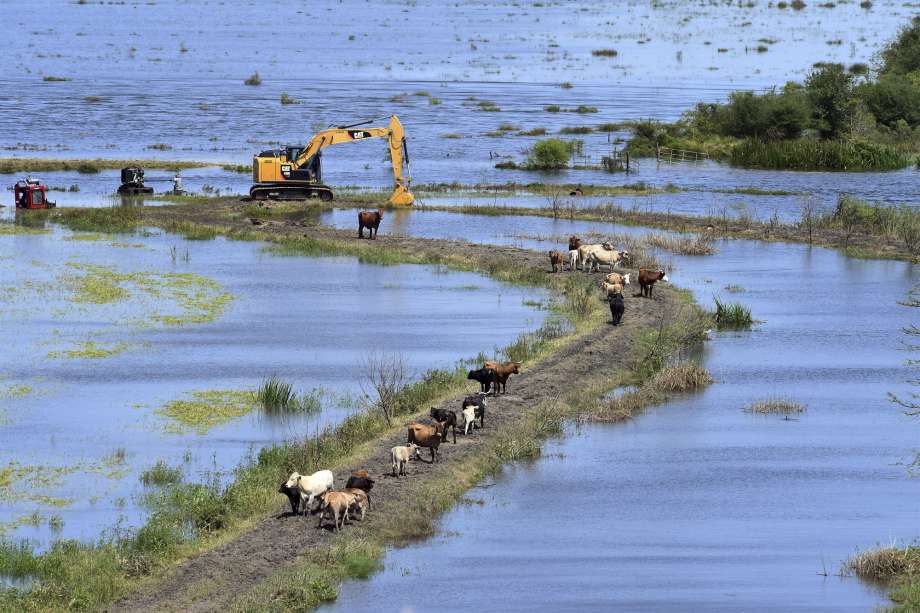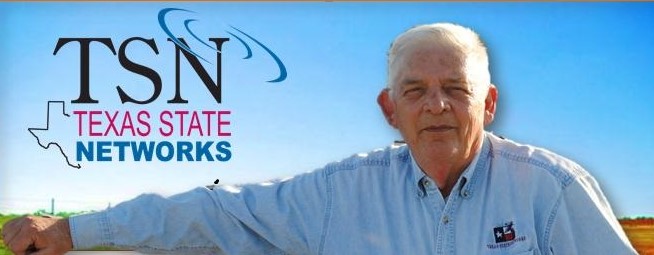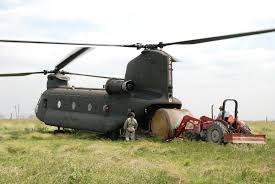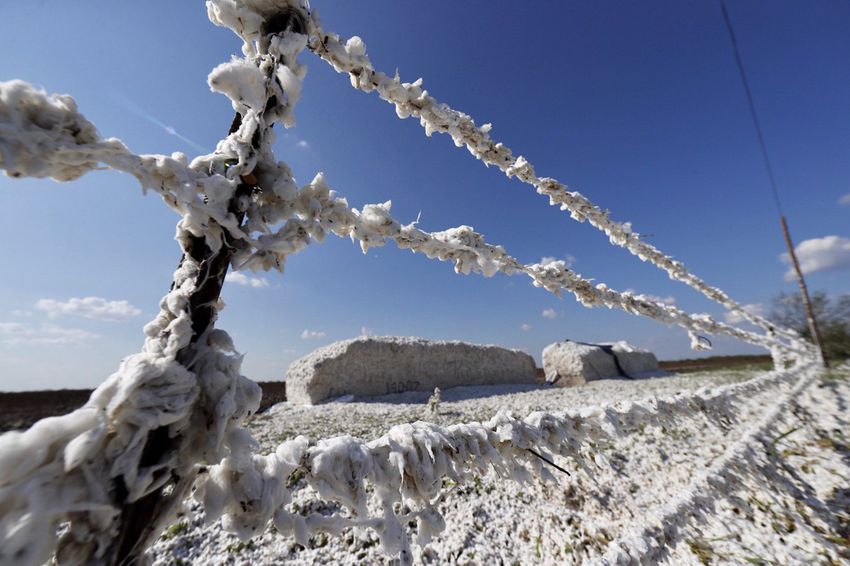
Tony Purcell (Texas State Networks, Dallas, TX) reports that Hurricane Harvey made landfall August 25, between Port Aransas and Port O'Connor, TX, as a Category 4 storm with winds of 130 mph. “In a four-day period, many areas received more than 40 inches of rain as the slow-moving storm meandered over east Texas causing catastrophic flooding. The resulting floods did massive damage to the cotton crop  and threatened more than a million head of cattle.” At the time, cotton growers in the region were harvesting what appeared to be the best crop in a decade. In fact, most of the crop in the 51-county disaster area had been harvested with modules, each weighing 10 metric tons, covered with tarps and stored in fields and gin yards. Tony added, “The 100 mph winds ripped the tarps off and scattered the cotton over several square miles. The rain finished the job, and all was lost. The destruction of modules combined with the loss of unharvested cotton in the fields is estimated at 400,000 to 500,000 bales.” There were 1.2 million head of cattle in the affected area. “That's about 25 percent of the herd in the nation's #1 cattle producing state. With Harvey only moving at 4 mph to 5 mph, ranchers moved a lot of their cattle to higher ground and, in many cases, completely out of the area. While there are no numbers available yet, death loss is expected to be minimal.” Slow movement of
and threatened more than a million head of cattle.” At the time, cotton growers in the region were harvesting what appeared to be the best crop in a decade. In fact, most of the crop in the 51-county disaster area had been harvested with modules, each weighing 10 metric tons, covered with tarps and stored in fields and gin yards. Tony added, “The 100 mph winds ripped the tarps off and scattered the cotton over several square miles. The rain finished the job, and all was lost. The destruction of modules combined with the loss of unharvested cotton in the fields is estimated at 400,000 to 500,000 bales.” There were 1.2 million head of cattle in the affected area. “That's about 25 percent of the herd in the nation's #1 cattle producing state. With Harvey only moving at 4 mph to 5 mph, ranchers moved a lot of their cattle to higher ground and, in many cases, completely out of the area. While there are no numbers available yet, death loss is expected to be minimal.” Slow movement of  the storm also resulted in record flooding. “A lot of cattle that had been moved to higher ground were stranded without hay or feed.” Tony observed, “The generosity of farmers and ranchers not hit by the hurricane was overwhelming. Hay and feed from north Texas and surrounding states was trucked in to staging areas. The Texas National Guard used Chinook and Huey helicopters to move the supplies to the areas where the hungry cattle were stranded.” Tony concluded, “As the waters recede, millions of dollars in damage to fences and infrastructure became apparent. That will be the long-term cost of Harvey.”
the storm also resulted in record flooding. “A lot of cattle that had been moved to higher ground were stranded without hay or feed.” Tony observed, “The generosity of farmers and ranchers not hit by the hurricane was overwhelming. Hay and feed from north Texas and surrounding states was trucked in to staging areas. The Texas National Guard used Chinook and Huey helicopters to move the supplies to the areas where the hungry cattle were stranded.” Tony concluded, “As the waters recede, millions of dollars in damage to fences and infrastructure became apparent. That will be the long-term cost of Harvey.”




 and threatened more than a million head of cattle.” At the time, cotton growers in the region were harvesting what appeared to be the best crop in a decade. In fact, most of the crop in the 51-county disaster area had been harvested with modules, each weighing 10 metric tons, covered with tarps and stored in fields and gin yards. Tony added, “The 100 mph winds ripped the tarps off and scattered the cotton over several square miles. The rain finished the job, and all was lost. The destruction of modules combined with the loss of unharvested cotton in the fields is estimated at 400,000 to 500,000 bales.” There were 1.2 million head of cattle in the affected area. “That's about 25 percent of the herd in the nation's #1 cattle producing state. With Harvey only moving at 4 mph to 5 mph, ranchers moved a lot of their cattle to higher ground and, in many cases, completely out of the area. While there are no numbers available yet, death loss is expected to be minimal.” Slow movement of
and threatened more than a million head of cattle.” At the time, cotton growers in the region were harvesting what appeared to be the best crop in a decade. In fact, most of the crop in the 51-county disaster area had been harvested with modules, each weighing 10 metric tons, covered with tarps and stored in fields and gin yards. Tony added, “The 100 mph winds ripped the tarps off and scattered the cotton over several square miles. The rain finished the job, and all was lost. The destruction of modules combined with the loss of unharvested cotton in the fields is estimated at 400,000 to 500,000 bales.” There were 1.2 million head of cattle in the affected area. “That's about 25 percent of the herd in the nation's #1 cattle producing state. With Harvey only moving at 4 mph to 5 mph, ranchers moved a lot of their cattle to higher ground and, in many cases, completely out of the area. While there are no numbers available yet, death loss is expected to be minimal.” Slow movement of  the storm also resulted in record flooding. “A lot of cattle that had been moved to higher ground were stranded without hay or feed.” Tony observed, “The generosity of farmers and ranchers not hit by the hurricane was overwhelming. Hay and feed from north Texas and surrounding states was trucked in to staging areas. The Texas National Guard used Chinook and Huey helicopters to move the supplies to the areas where the hungry cattle were stranded.” Tony concluded, “As the waters recede, millions of dollars in damage to fences and infrastructure became apparent. That will be the long-term cost of Harvey.”
the storm also resulted in record flooding. “A lot of cattle that had been moved to higher ground were stranded without hay or feed.” Tony observed, “The generosity of farmers and ranchers not hit by the hurricane was overwhelming. Hay and feed from north Texas and surrounding states was trucked in to staging areas. The Texas National Guard used Chinook and Huey helicopters to move the supplies to the areas where the hungry cattle were stranded.” Tony concluded, “As the waters recede, millions of dollars in damage to fences and infrastructure became apparent. That will be the long-term cost of Harvey.” 